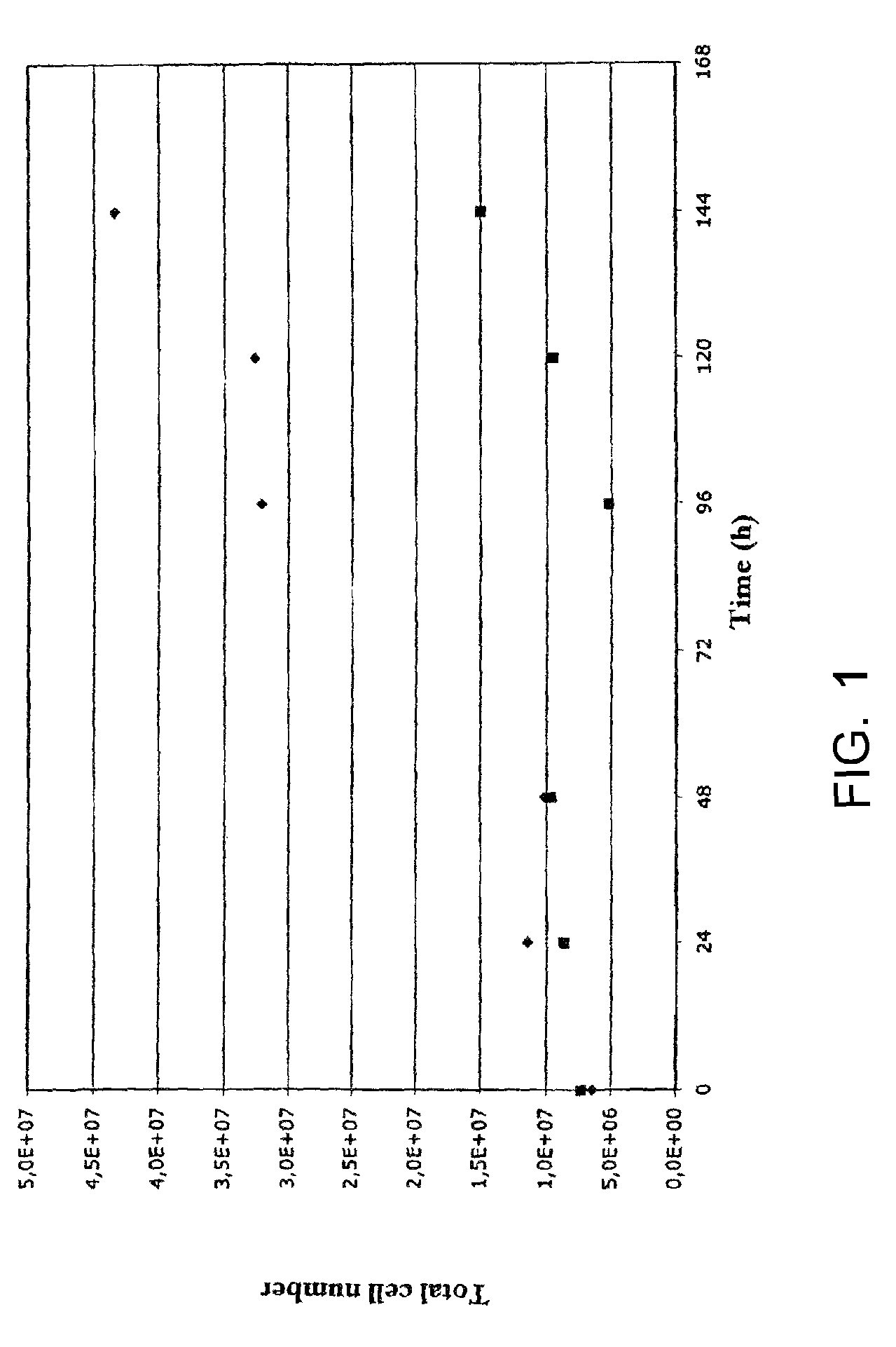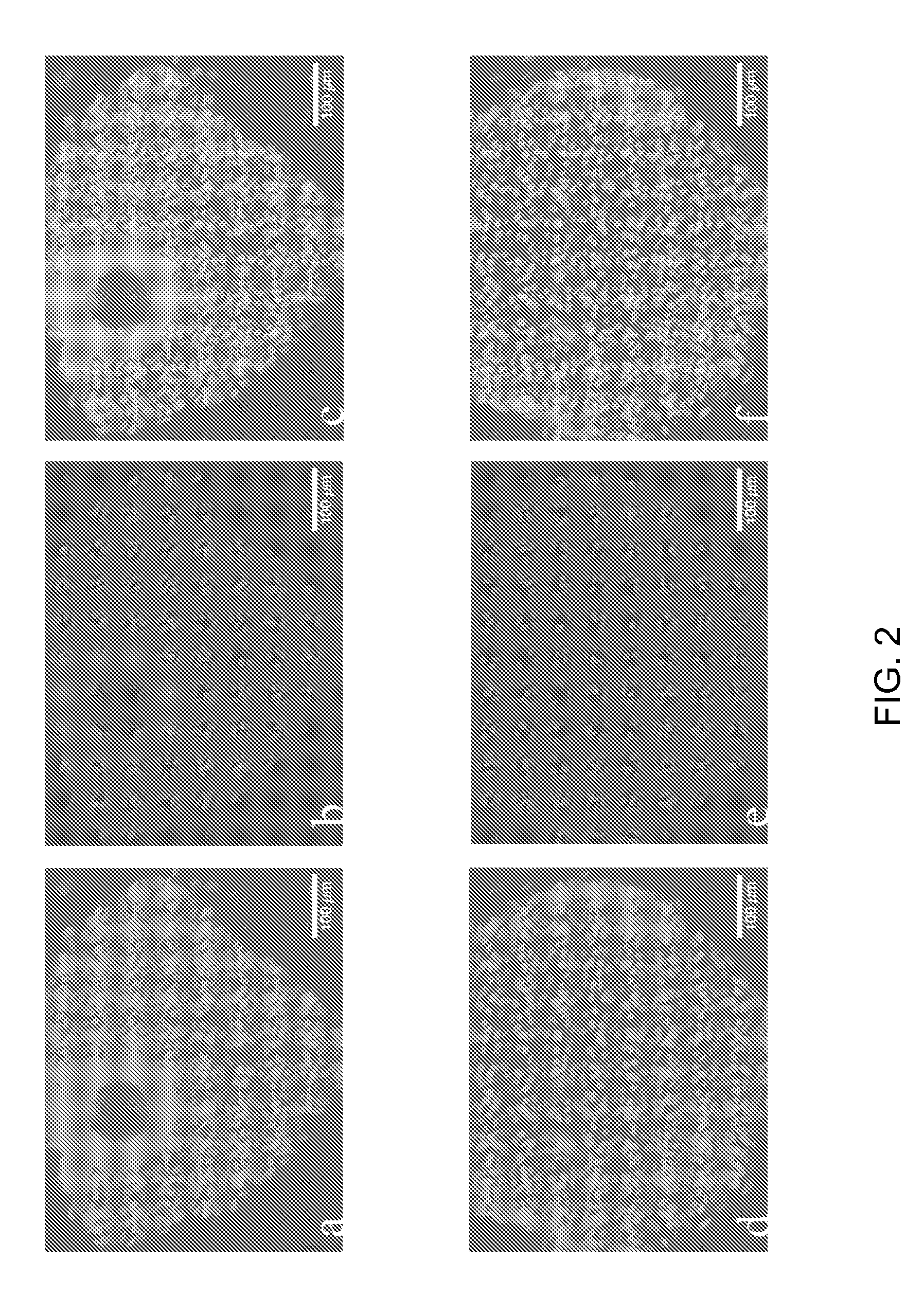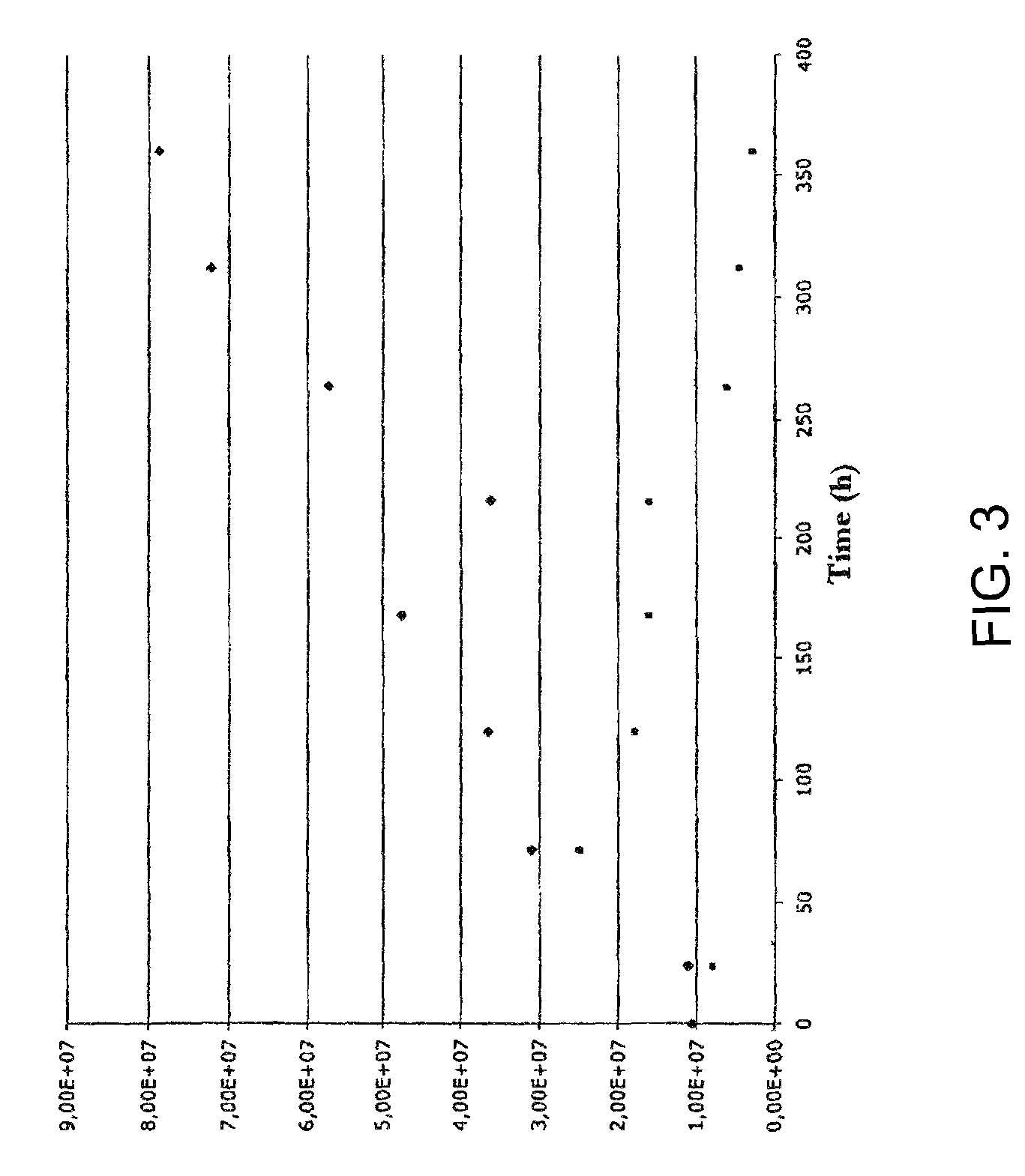Scalable process for cultivating undifferentiated stem cells in suspension
a technology of stem cells and suspensions, which is applied in the field of scalable process for cultivating undifferentiated stem cells in suspensions, can solve the problems of inability to suitably control experimental parameters, inability to cultivate stem cells, and inability to use controlled experimental conditions according to the state of the ar
- Summary
- Abstract
- Description
- Claims
- Application Information
AI Technical Summary
Benefits of technology
Problems solved by technology
Method used
Image
Examples
example 1
[0067]5.5×105 of human embryonic stem cells / per ml (cell line H9.2, Amit et al. (2000) Dev. Biol. 227: 271) are introduced together with 1.5 mg / ml Cytodex3 (Amersham) or 0.5 mg / ml CultispherG (Perbio) microcarriers into a spinner (e.g. Bellco). Knockout DMEM with 20% serum replacement, 1% non essential amino acids, 0.5% L-glutamine and 0.1 mM 2-mercaptoethanol (Invitrogen) serve as the culture medium, which has been conditioned by gamma-irradiated primary mouse fibroblasts derived from mouse strain CD1 for 24 hours (for the preparation of fibroblasts: Siemen, H., Diplomarbeit 2003, Institut für Anatomie, Universität Regensburg). 140,000 fibroblasts per ml medium to be conditioned are used. Before application to the hESC culture, the conditioned medium is filtered and 4 ng / ml bFGF (Invitrogen) is added. The culture volume is approximately 10 ml. Following an initial resting phase of one day, the medium volume is increased to 20 ml and an intermittent agitation phasing is initiated, a...
example 2
[0069]3.5×105 of human embryonic stem cells per ml (cell line H9.2) are introduced together with 1.5 mg / ml Cytodex3 (Amersham) or 0.5 mg / ml CultispherG (Perbio) microcarriers into a regulated bioreactor (e.g. Braun). Knockout DMEM with 20% serum replacement, 1% non essential amino acids, 0.5% L-glutamine and 0.1 mM 2-mercaptoethanol (Invitrogen) serve as the culture medium, which has been conditioned by gamma-irradiated primary mouse fibroblasts derived from mouse strain CD1 for 24 hours (for the preparation of fibroblasts: Siemen, H., Diplomarbeit 2003, Institut für Anatomie, Universität Regensburg). 140,000 fibroblasts per ml medium to be conditioned are used. Before application to the hESC culture, the conditioned medium is filtered and 4 ng / ml bFGF (Invitrogen) is added. The culture volume is approximately 5 liters. Following an initial resting phase of one day, an intermittent agitation phasing is initiated. A revolution speed of 30 rpm is applied. The oxygen partial pressure i...
example 3
[0070]3.5×105 of human embryonic stem cells per ml (cell line H9.2) are introduced together with 1.5 mg / ml Cytodex3 (Amersham) or 0.5 mg / ml CultispherG (Perbio) microcarriers into a spinner. Knockout DMEM with 20% serum replacement, 1% non essential amino acids, 0.5% L-glutamine and 0.1 mM 2-mercaptoethanol (Invitrogen) serve as culture medium, which has been conditioned by gamma-irradiated primary mouse fibroblasts derived from mouse strain CD1 for 24 hours (for the preparation of fibroblasts: Siemen, H., Diplomarbeit 2003, Institut für Anatomie, Universität Regensburg). 140,000 fibroblasts per ml medium to be conditioned are used. Before application to the hESC culture, the conditioned medium is filtered and 4 ng / ml bFGF (Invitrogen) is added.
[0071]The culture volume is approximately 20 ml. Following an initial resting phase of one day, an intermittent agitation phasing is initiated. An impeller agitator is used, and a revolution speed of 20 rpm is applied. Intermittent agitation ...
PUM
| Property | Measurement | Unit |
|---|---|---|
| cultivation volume | aaaaa | aaaaa |
| cultivation volume | aaaaa | aaaaa |
| volume | aaaaa | aaaaa |
Abstract
Description
Claims
Application Information
 Login to View More
Login to View More - R&D
- Intellectual Property
- Life Sciences
- Materials
- Tech Scout
- Unparalleled Data Quality
- Higher Quality Content
- 60% Fewer Hallucinations
Browse by: Latest US Patents, China's latest patents, Technical Efficacy Thesaurus, Application Domain, Technology Topic, Popular Technical Reports.
© 2025 PatSnap. All rights reserved.Legal|Privacy policy|Modern Slavery Act Transparency Statement|Sitemap|About US| Contact US: help@patsnap.com



